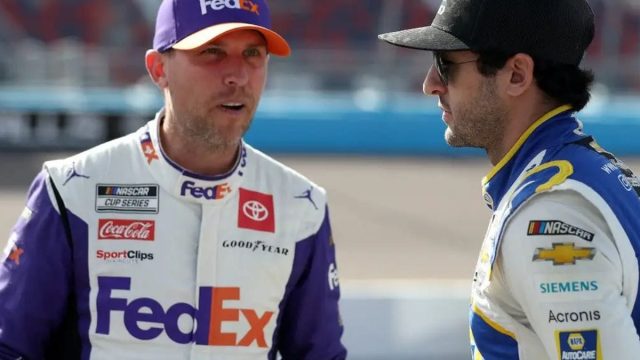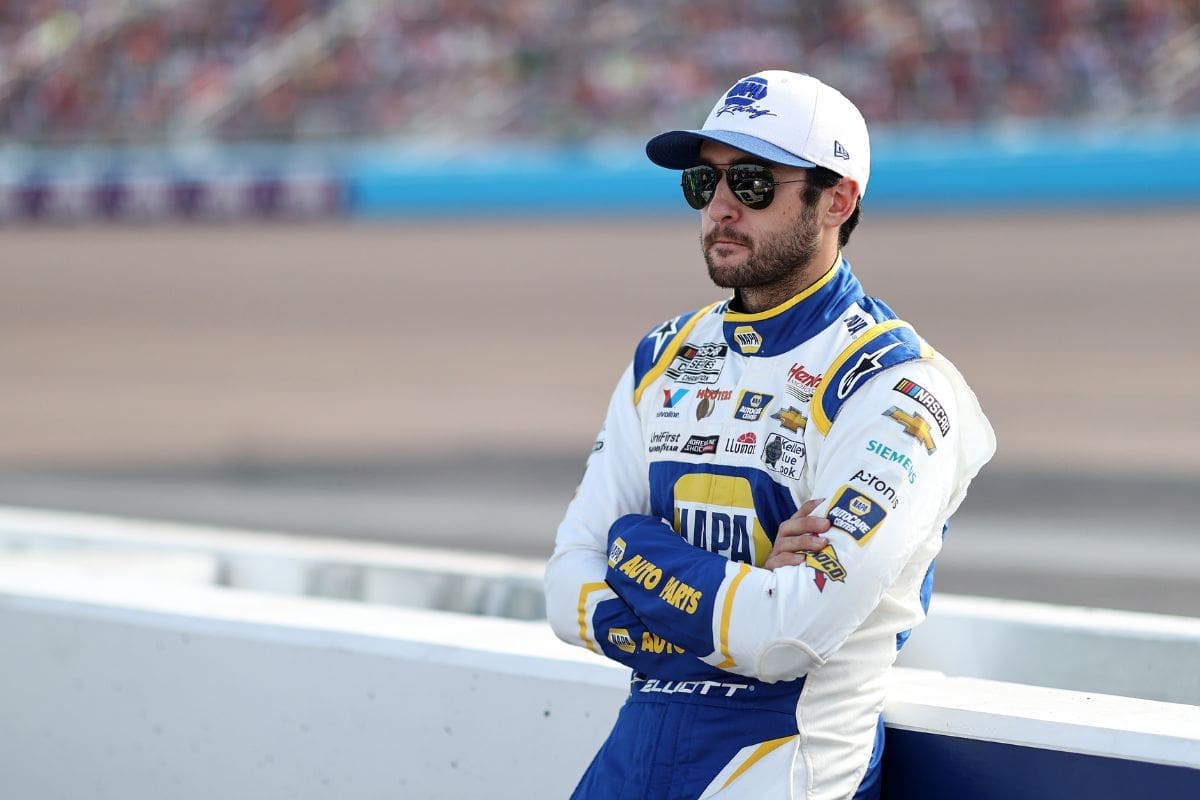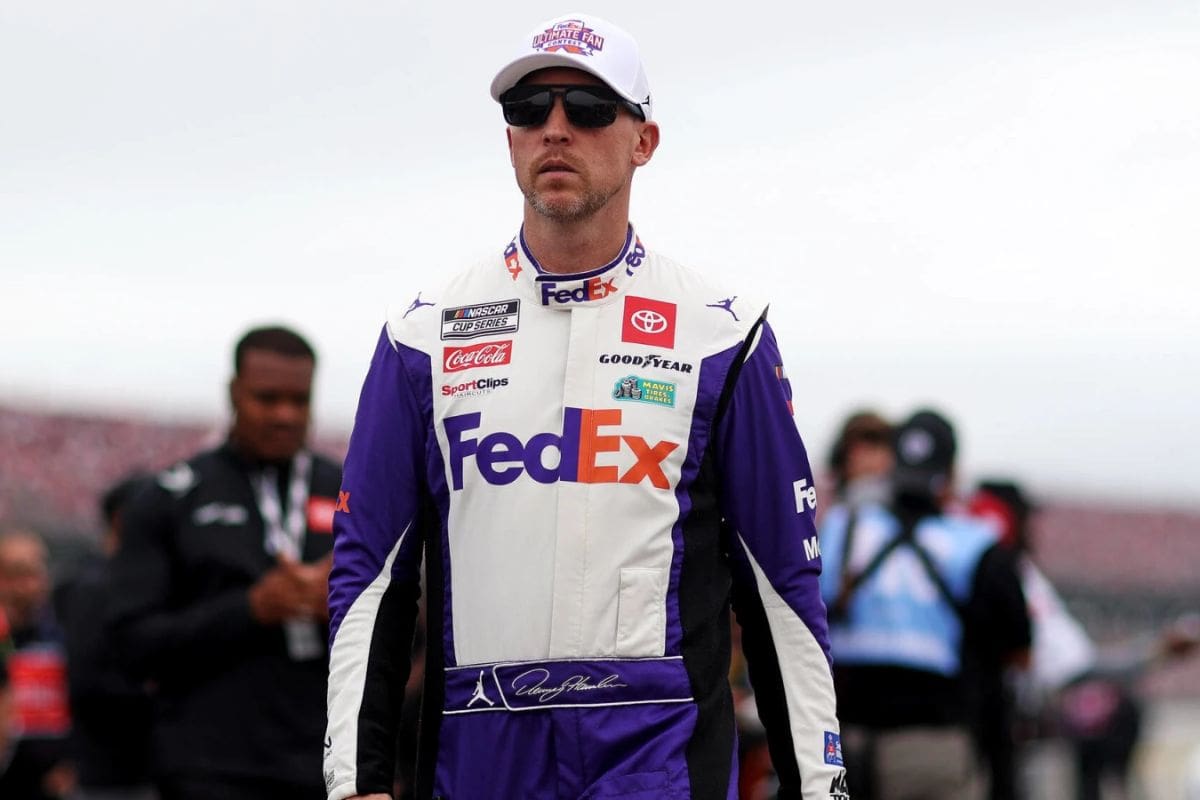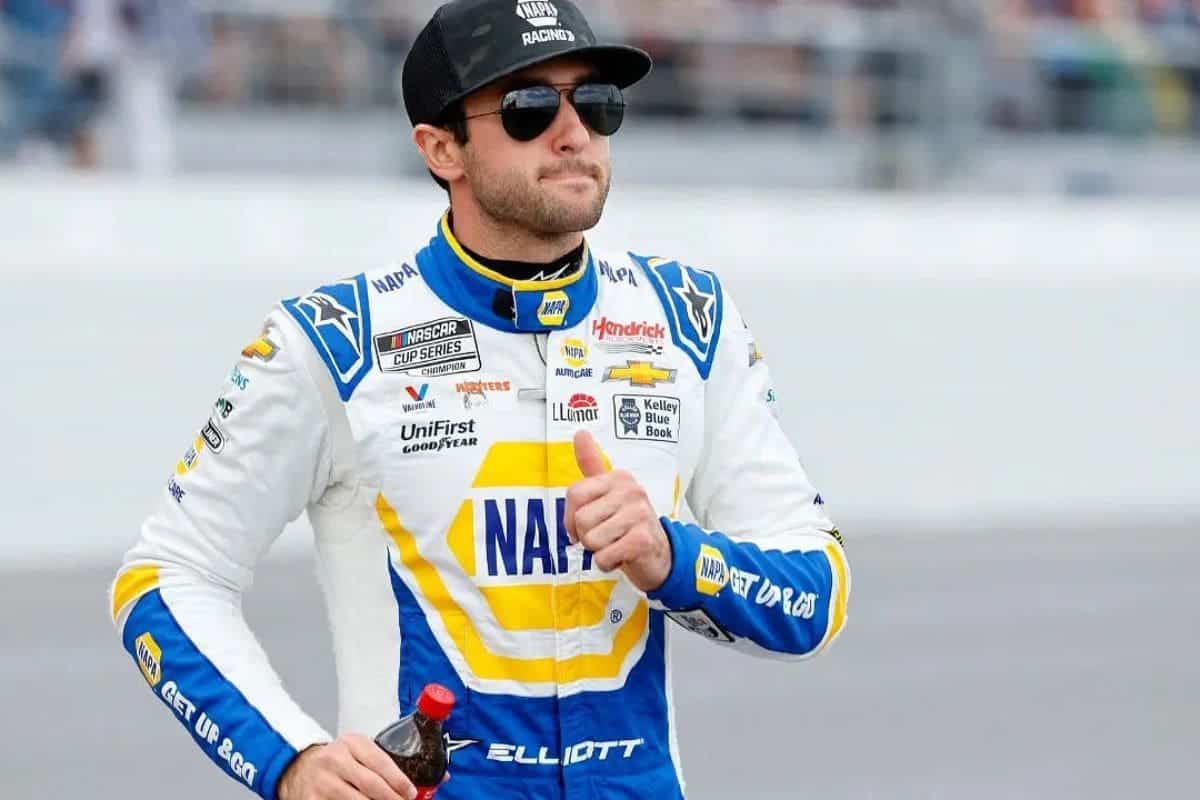Chase Elliott and Denny Hamlin Slam Next-Gen Cars: The recent partnership between Chase Elliott and Denny Hamlin at the Indianapolis Motor Speedway highlights a fascinating shift in the dynamics of NASCAR. Both drivers, traditionally seen as fierce competitors, have united in their critique of the current car aerodynamics and track design, which they argue have greatly hampered overtaking opportunities. Their frustrations not only reflect their own racing experiences but also raise broader questions about the implications of such design choices on competition and audience engagement. As this unlikely alliance unfolds, the potential for revolutionary changes in the sport becomes increasingly compelling. What could this mean for the future of NASCAR?
Key Highlights
- Chase Elliott and Denny Hamlin united over shared frustrations regarding overtaking difficulties at the Indianapolis Motor Speedway during the Brickyard 400.
- Both drivers criticized the Next-Gen car’s performance, highlighting aerodynamic inefficiencies that hinder passing and create tactical challenges.
- Elliott’s blend line violation during Stage 1 raised concerns about NASCAR’s consistency in penalty enforcement amid ongoing overtaking difficulties.
- The approaching playoffs intensified scrutiny on car performance, prompting discussions on potential changes to enhance competition and fairness in racing.
Unlikely Alliance Between Chase Elliott and Denny Hamlin
In a surprising turn of events within the NASCAR landscape, Chase Elliott and Denny Hamlin have forged an unexpected alliance, united by their shared challenges in overtaking at the Indianapolis Motor Speedway during the Brickyard 400. Traditionally viewed as fierce competitors with an extensive history of on-track altercations, the two drivers have found common ground amid the frustrations that plagued the race.
The Brickyard 400, known for its rich history and high stakes, presented unique challenges that tested even the most skilled drivers. Both Elliott and Hamlin encountered notable difficulties in executing passes, a situation that is exacerbated by the track’s design and the aerodynamic characteristics of the cars. This shared experience highlights the complexity of racing at Indianapolis and emphasizes the often-overlooked friendship that can emerge from mutual adversity.
Their alliance can be interpreted as a tactical recognition of the need for collaboration in overcoming systemic issues within the sport. By voicing their frustrations collectively, Elliott and Hamlin not only amplify their individual concerns but also serve as catalysts for broader discussions on the dynamics of passing in NASCAR.
This unlikely partnership transcends the traditional rivalries inherent in racing. As both drivers navigate this challenging terrain, their newfound solidarity may pave the way for deeper conversations about the future of NASCAR racing strategies.
Hamlin Voices Concerns Over Indianapolis’ Passing Challenges
Drawing from the shared frustrations that brought Chase Elliott and Denny Hamlin together, Hamlin has openly articulated his concerns regarding the persistent passing challenges at the Indianapolis Motor Speedway, highlighting a substantial oversight in the development of the Next-Gen car.
In a candid discussion on his podcast, ‘Actions Detrimental,’ Hamlin expressed his deep discontent with the obstacles drivers faced during the recent Brickyard 400. His insights underscore a critical need for reflection within NASCAR’s development processes.
“I asked them three times. THREE TIMES I asked, ‘Are you sure it’s right?’ Because you haven’t put it around any other cars during these pre-season testing.” – Hamlin
Hamlin’s remarks emphasize four key issues surrounding the passing difficulties:
- Testing Limitations: The Next-Gen car underwent insufficient testing in the presence of other vehicles, leading to an unrealistic evaluation of its performance.
- Ignored Warnings: Despite raising concerns multiple times, Hamlin’s feedback was overlooked, reflecting a disconnect between drivers and NASCAR officials.
- Impact on Competition: The inability to pass effectively diminishes the competitive nature of races, frustrating both drivers and fans alike.
- Future Development: These challenges signal the necessity for NASCAR to reevaluate its design and testing protocols to prevent similar issues in future iterations of racing vehicles.
Hamlin’s Frustration with Next-Gen Cars
Frequently expressing his discontent, Denny Hamlin has highlighted the considerable shortcomings of the Next-Gen cars, particularly their detrimental performance in traffic, which has exacerbated the challenges drivers face on the track. Hamlin’s candid remarks highlights a critical issue: the design of these vehicles has created an environment where the leader enjoys an overwhelming advantage due to cleaner air, leaving those in trailing positions struggling to gain ground.
He articulated this frustration, stating, “These Next-Gen cars are terrible in traffic. They’re the worst cars in NASCAR traffic.” This assertion not only reflects his personal experiences but also signals a broader concern within the driver community. The aerodynamic inefficiencies of the Next-Gen cars diminish their ability to perform effectively when in close quarters with other vehicles.
In races like those held at Indianapolis Motor Speedway, where airflow dynamics are paramount, the implications of this design flaw become particularly pronounced. The disparity in performance leads to tactical challenges; drivers are forced to adopt more conservative approaches, often yielding to the dominance of the leader rather than engaging in competitive overtaking maneuvers.
Hamlin’s frustrations, mirrored by fellow competitors such as Chase Elliott, are a clarion call for NASCAR to reassess the Next-Gen car specifications. By addressing these concerns, the series could improve the competitive landscape, ensuring that racing remains an exhilarating spectacle that rewards skill and strategy rather than merely benefiting those fortunate enough to lead.
Elliott’s Frustration Over Blend Line Violation
Chase Elliott’s frustration reached a tipping point during Stage 1 of the race when NASCAR issued a blend line violation that he strongly disagreed with, highlighting the growing tensions surrounding competitive fairness in the sport. The penalty not only derailed his chances for a strong finish but also emphasized a larger conversation about the challenges drivers face in maneuvering the complexities of the Indianapolis Motor Speedway.
Elliott’s discontent can be distilled into several critical points:
- Competitive Integrity: The blend line violation raised questions about the consistency of NASCAR’s enforcement and its impact on driver strategy.
- Track Position: Falling a lap down drastically compromised Elliott’s race, emphasizing the considerable influence of penalties on outcomes.
- Passing Challenges: The inherent difficulties of overtaking at Indianapolis exacerbate the frustrations surrounding any penalties issued, making even minor infractions feel disproportionately punitive.
- Driver Relations: Elliott’s reaction reflects broader sentiments among drivers regarding the clarity and application of rules, which can foster distrust in the governing body.
As the race unfolded, Elliott’s situation displayed the balance between adherence to regulations and the pursuit of competitive excellence. His vehement opposition to the blend line violation is more than a personal grievance; it is emblematic of a critical discourse within NASCAR, as drivers seek both fairness and clarity in a sport that demands precision at every turn.
Elliott’s and Hamlin’s Shared Frustration
Elliott and Hamlin’s on-track struggles captured the essence of a shared frustration among drivers, as both navigated the formidable challenges of overtaking at Indianapolis while grappling with the inherent limitations of their vehicles. Their recent exchanges highlighted the growing dissatisfaction within the NASCAR community regarding the current car designs, which seem to hinder competitive racing and overtaking maneuvers.
Elliott’s sarcastic radio communication, requesting a “physics-defying button” amidst Hamlin’s struggles, emphasizes a sentiment that transcends individual rivalry. The two drivers, traditionally seen as competitors, found themselves united in a moment of exasperation, revealing the psychological toll that such racing challenges exact on athletes. Hamlin’s reference to a “weird spot” succinctly encapsulates the frustration of being unable to utilize skill and strategy effectively due to mechanical constraints.
“If you can ship me a f***ing physics-defying button, that’d be great. Other than that, you’re f***ed.” – Elliott
"If you can ship me a f***ing physics defying button, that'd be great. Other than that, you're f***ed."
Chase Elliott responding what he needs to make his car better
— Jordan Bianchi (@Jordan_Bianchi) July 21, 2024
This shared experience amplifies the struggles of individual drivers and raises broader questions about NASCAR’s equipment regulations and the design philosophy underpinning the vehicles. The call for change from prominent figures like Elliott and Hamlin could signal a pivotal moment for the series, as drivers demand cars that improve rather than inhibit competition.
As the playoffs approach, the implications of these frustrations may weigh heavily on NASCAR’s decision-makers. Will they respond to this chorus of discontent by refining car specifications, or will drivers continue to face challenging obstacles on the track? The future of competitive racing could hinge on how these issues are addressed.
News in Brief: Chase Elliott and Denny Hamlin Slam Next-Gen Cars
The collaboration between Chase Elliott and Denny Hamlin emphasizes a pivotal moment in NASCAR, revealing the profound impact of car aerodynamics and track design on competitive racing.
By voicing shared frustrations, these drivers not only highlight the challenges faced during the Brickyard 400 but also initiate an essential dialogue regarding necessary changes in the sport.
This unlikely partnership may serve as a catalyst for reform, ultimately enhancing both driver experience and fan engagement in future events.
Also Read: Chase Elliott’s Redemption: How He’s Beating the Odds and Holding the Top Spot



